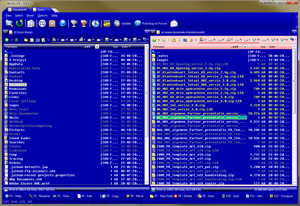

Dolphin is probably one of my favorite piece of software today. Switching from managing files in the terminal to using Dolphin has been an amazing experience. It was a bit of a pain at the beginning, so my first move was to configure everything so that my usual key bindings worked again, but I quickly found that I could be as efficient and at ease as I was before using KDE Apps as they were intended to be used (I even switched from doing my emails in Emacs to using a graphical email client!). So I read a bit, compared the two, and decided to give a try to KDE. My environment consisted in Openbox as a window manager, rxvt-unicode as a terminal with Bash as a shell, and then mostly Emacs and Firefox (considering only graphical programs).Ī few years ago, maybe 2 or 3 I'm not sure, I decided to try to experience Linux the way "muggles" do, because I was always telling people to use it but I actually never properly used what they would if they followed my advice, i.e., Gnome or KDE. Once on Linux, I didn't even bother to install a file manager at all, I just kept using the terminal. At this time on Mac OS X I was barely using the Finder at all, I spent all my time in the Terminal and managed my files from there. I switched from Mac OS X to Linux (Debian) a bit more than 15 years ago. Hopefully the file selection dialogue then isn't totally unrelated from a UI point of view. a "file system interface", probably spatial and a more abstracted powerful file manager could and should co-exist.

Personally, I'd even make the argument that they've become worse at times and that they're not even in the same niche, i.e. I personally wouldn't consider the Win 11 explorer to be that more usable than winfile.exe, but people have different thresholds. Is it because the system apps have gotten better? Maaaybe.

Is it because file usage in general has declined? Generally mabye, but not in that target demographic. I rarely see that these days, both from regular users and my fellow software developers. Next to image viewers probably one of the most common third party tools. There was a pretty huge market of shareware (or open source on linux) for this. Quite often one of the commanders, but I've seen other preferences. Back in the days, pretty much any "power user" had their own favorite replacement for the built-in stop gap solution. It's interesting to see the "decline" of secondary file managers on Windows and probably Linux systems, too.


 0 kommentar(er)
0 kommentar(er)
